1963 saw Innocenti add the IM3, a lightly modified Morris 1100, 1964 saw the arrival of the simplified I4, whilst the infamous Mini entered production in Italy in 1965.
This was later joined by its Cooper and Traveller variants. In 1966 Ferdinand Innocenti passed
away and his son, Luigi, took over the reigns. In 1972 the newly formed British Leyland made a successful takeover bid for the automotive part of
Innocenti, whilst the remaining parts were sold to other buyers.
Apart from a version of the Allegro (known as the Regent), 1974 saw a more significant new product added to the Innocenti range, the new Bertone-styled Mini. With completely
The early 1980s saw various versions of the Mini introduced, with some success. In 1983 Innocenti produced 22,578 cars. With the continuing poor health of the British
engine supplier, De Tomaso looked elsewhere and managed to source a new 1-litre three cylinder engine from Daihatsu as well as a smaller 622 twin and a diesel
version of the 1-litre unit. These
engines replaced the old British four-cylinder engines across the range, from the 31bhp Mini 650 to the 72bhp Turbo De Tomaso as the sporty model was known.
The general cars were called the Minitre.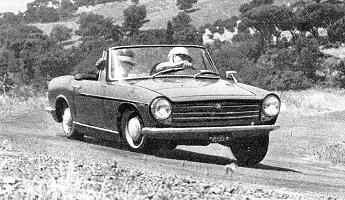 Starting off making steel tubing in the 1920's, Ferdinand Innocenti developed his company to include machinery, presses, tools and the famous Lambretta
scooter alongside the ever important tubing. At the 1960 Turin Motorshow Innocenti finally made the move he had long been planning into car production
with the launch of the A40, a licence built Austin A40 saloon, and the 950 Spider, a rebodied Austin-Healey Sprite.
Initially the A40 was assembled from complete kits, but gradually the local content increased until only the engines were imported. The 950 Spider meanwhile
grew to the Innocenti S with the adoption of a bigger 1100 engine in 1961.
Starting off making steel tubing in the 1920's, Ferdinand Innocenti developed his company to include machinery, presses, tools and the famous Lambretta
scooter alongside the ever important tubing. At the 1960 Turin Motorshow Innocenti finally made the move he had long been planning into car production
with the launch of the A40, a licence built Austin A40 saloon, and the 950 Spider, a rebodied Austin-Healey Sprite.
Initially the A40 was assembled from complete kits, but gradually the local content increased until only the engines were imported. The 950 Spider meanwhile
grew to the Innocenti S with the adoption of a bigger 1100 engine in 1961.
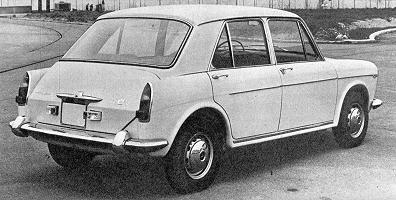 different styling and including a hatchback, the New Mini proved popular. Despite the product, the parent company was doing badly and in 1975 Innocenti
was closed and passed to the Italian government, just as BL was renationalised. After various wrangling, De Tomaso emerged the new owner in 1976, and production
restarted of now renamed Innocenti Mini de Tomaso.
different styling and including a hatchback, the New Mini proved popular. Despite the product, the parent company was doing badly and in 1975 Innocenti
was closed and passed to the Italian government, just as BL was renationalised. After various wrangling, De Tomaso emerged the new owner in 1976, and production
restarted of now renamed Innocenti Mini de Tomaso.
950 Spider and 'S'
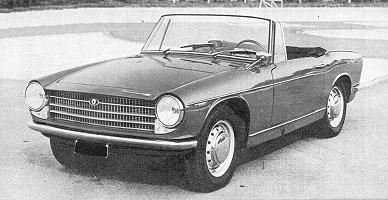 Initially launched as the 950 Spider in 1960, this was an Austin Healey Sprite with a completely new body designed by Ghia,
powered by a 948cc four cylinder engine. After the initial
few cars, in 1961 the engine size increased to 1098cc, disc brakes were fitted at the front, a variety of detail changes were made
and the car was renamed the Innocenti S. A coupé version was also produced in limited numbers.
Initially launched as the 950 Spider in 1960, this was an Austin Healey Sprite with a completely new body designed by Ghia,
powered by a 948cc four cylinder engine. After the initial
few cars, in 1961 the engine size increased to 1098cc, disc brakes were fitted at the front, a variety of detail changes were made
and the car was renamed the Innocenti S. A coupé version was also produced in limited numbers.
Technical Details
| Driveline | longitudinal engine at front with rear wheel drive |
| Suspension | front : independent with wishbones and coil springs
rear : rigid axle with leaf springs wheelbase : 2030mm track (front/rear) : 1160mm/1130mm |
| Brakes | front : initially drums then discs, diameter 203mm
rear : drums |
| Gearbox | 4 speed manual |
| dry weight | 695 kg |
IM3 and I4
In 1964 this was joined by a cheaper version, the I4. With basically the same bodyshell this had a slightly less powerful single carburettor engine,
did not have the headlight fairing of the IM3 and had a different grille. In 1966 Innocenti added an I4S to the range, basically an I4 with the twin carburettor
engine from the IM3.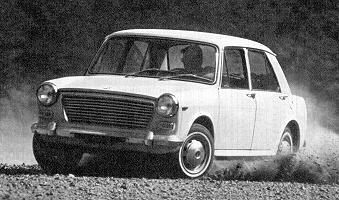 The third Innocenti to enter production was the IM3 which was released in 1963. Using a front-wheel drive transverse engine layout it
was basically a mildly modified BMC model. The grille, headlights, instruments, brakes and trim were all improved over the British product, whilst the
four cylinder 1098cc twin SU engine remained the same.
The third Innocenti to enter production was the IM3 which was released in 1963. Using a front-wheel drive transverse engine layout it
was basically a mildly modified BMC model. The grille, headlights, instruments, brakes and trim were all improved over the British product, whilst the
four cylinder 1098cc twin SU engine remained the same.
Technical Details (IM3)
| Driveline | transverse engine at front with front wheel drive |
| Suspension | Independent all round with hydroelastic system interconnecting front and rear
wheelbase : 2370mm track (front/rear) : 1310mm/1290mm |
| Brakes | front : discs
rear : drums |
| Gearbox | 4 speed manual |
| dry weight | 856 kg |
Mini (Bertone)
In the mid 1980s all changed as the entire mechanical part of the car changed from BL sourced parts to Daihatsu. The engines were three cylinder units,
available as a 993cc petrol, also with a turbocharger, and a 993cc diesel. Shortly afterwards a 617cc two cylinder, still from Daihatsu, was added. At the
same time the suspension was changed from the original Minis hydroelastic system to a more conventional MacPherson strut front and transverse leaf spring
rear layout. Known as the Minitre, the top of the range model got a turbocharged version of the 993cc triple and was called the Turbo de Tomaso.
Production continued until 1990 when Innocenti passed into the Fiat empire.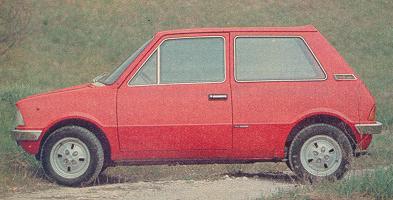 In 1974 Innocenti began producing a 'new' Mini, using the same proven mechanicals, but clothed with an all new body designed
by Bertone. A much more angular design it was also more practical with its hatchback. It was initially launched with the 998cc engine and called the Mini 90,
a year later the Mini 120 with the 1275cc engine was also released. Later a more luxurious version of the 90 was known as the 'Mille'.
In 1974 Innocenti began producing a 'new' Mini, using the same proven mechanicals, but clothed with an all new body designed
by Bertone. A much more angular design it was also more practical with its hatchback. It was initially launched with the 998cc engine and called the Mini 90,
a year later the Mini 120 with the 1275cc engine was also released. Later a more luxurious version of the 90 was known as the 'Mille'.
Technical Details (1975 Mini 120)
| Driveline | transverse engine at front with front wheel drive |
| Suspension | wheelbase : 2040mm
track (front/rear) : 1250mm/1250mm |
| Brakes | front : discs, diameter 203mm
rear : drums |
| Gearbox | 4 speed manual, later 5 speed
automatic available on some vesions |
| empty weight | 730 kg |
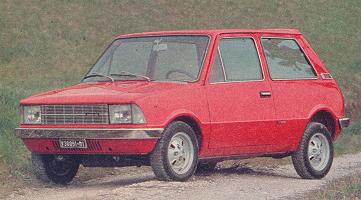 |
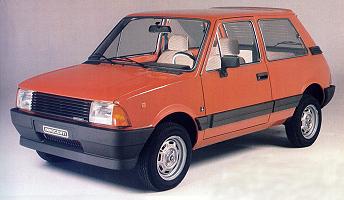 |
Links
Innocenti comment form
Use the buttons at the top to navigate
further, or
Copyright © 2000 to 2008 CarsfromItaly